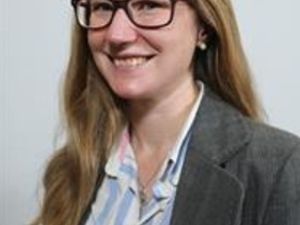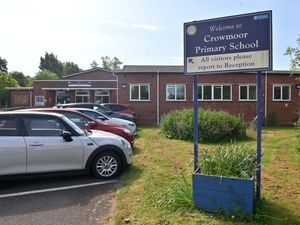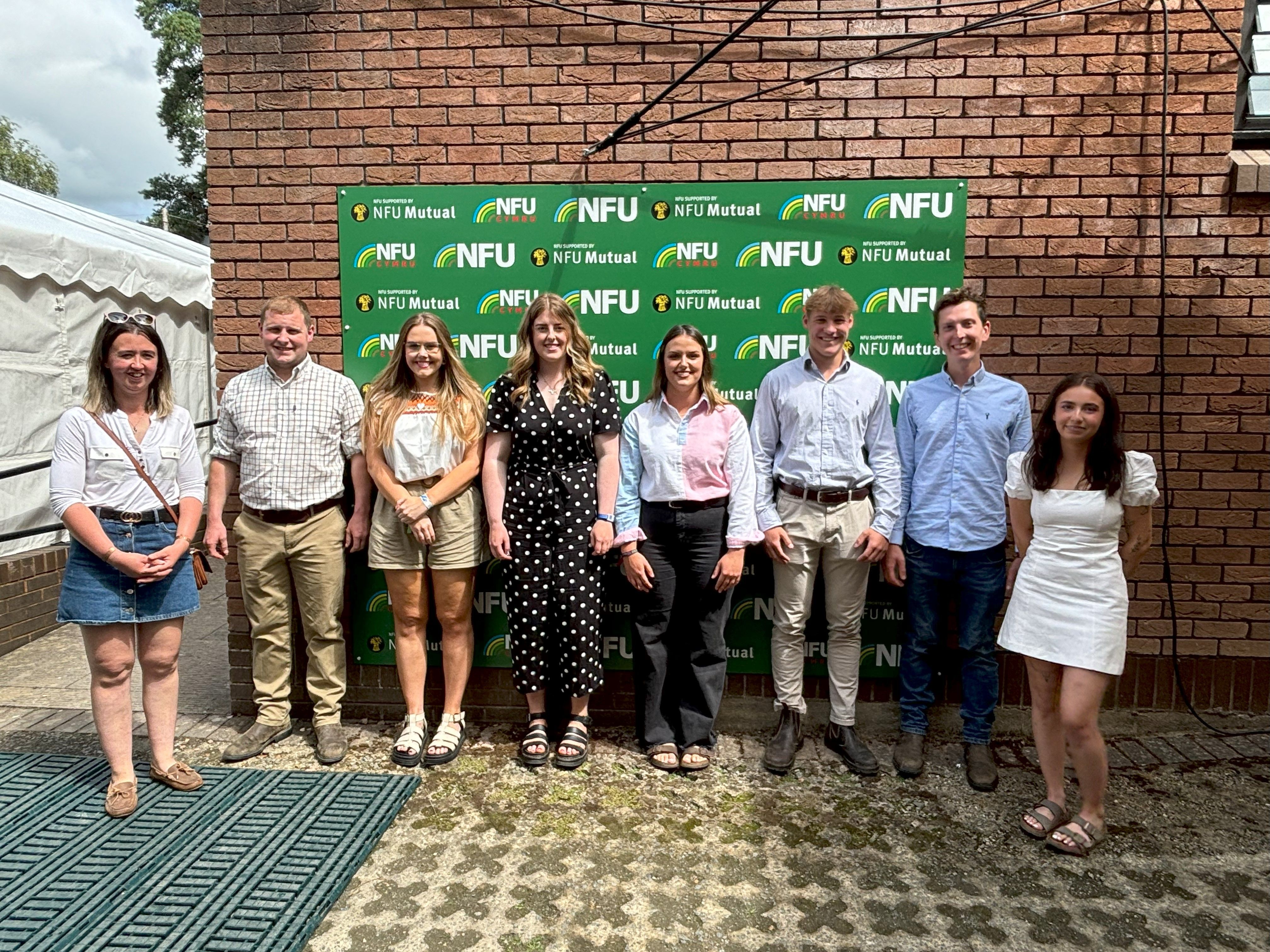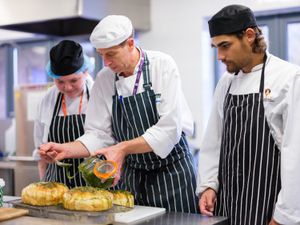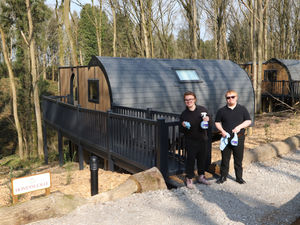A lesson on inhumanity: Shropshire pupils shown the horrors of Auschwitz
Pupils from Shropshire were shown the horrors of Auschwitz during a schools visit to Poland this week. The Shropshire Star's Mat Growcott joined them.
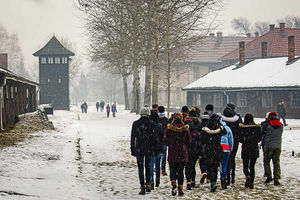
It takes a lot to stun 200 teenagers into silence, but there was a noticeable lack of talking during a long, dark walk back along the infamous rail tracks of Auschwitz-Birkenau.
A day visiting the most famous sites of genocide in the world had finally taken its toll. The group quietly contemplated everything they had seen, the only noise, an eerie echo of train carts rattling in the nearby town of Oswiecim.
It was the atmospheric end of a long day for pupils from across Shropshire and the West Midlands, who had started the day apprehensive but excited about a trip to Poland to see Auschwitz and Auschwitz-Birkenau.
By the end of the trip, many of them felt they had a duty to keep alive the memory of those who perished in the camps.
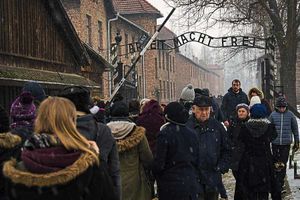
"The Nazis took their victims and they turned them into numbers. Today we took those numbers and we turned them into names," James Curtis said. The 16-year-old pupil from The Marches in Oswestry added that he didn't know how to feel about what he'd seen.
"I was expecting it to be a dark and dingy place, completely devoid of life. It was ironically beautiful.
"It's nothing like you read in the books."
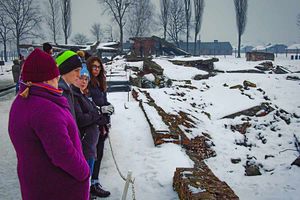
His schoolmate, Naomi Chapman, 17, said: "I'll take a couple of days to process what we've seen.
"We had background knowledge of what had happened, but you don't know what it's actually like until you get there.
"It's important that we go back and spread this message. The experience puts a story behind the statistics. It isn't a number on the page – it feels real now."
The day began in Oswiecim, on the site of the Great Synagogue that once stood in the town. It had been the centre of the Jewish community in the area for 300 years, but was destroyed by Nazis when they first arrived in the town.
Star reporters Mat Growcott and Judith Hawkins tweeted from the visit:
Pupils were given pictures taken in the area, and discussed what life might have been like for pre-war Jews.
Our guide for the day, Rabbi Andy Shaw, spoke to us about the sorts of things that might have happened in the synagogue.
He said: "I can tell you what would have happened every day, because it's what I have done every day."
The group stood in a small green space, surrounded by a few trees. Young children played in the snow nearby, sledding and throwing snowballs.
As it started to snow, the first stop was a reminder of just how much was destroyed by the Nazis.

It was a short drive to Auschwitz from Oswiecim, but the atmosphere in the coach noticeably changed.
Many of the pupils were shocked at just how close this death camp was to the town – just a few kilometres from the city centre.
As the stark buildings came into view, there was no mistaking the landscape. It's been recreated a million times in films, and there's no end of documentary footage and photographs.
Before the start of the tour, pupils from Ellesmere College, in Shrewsbury and New College, Telford, told me that they were nervous at what they might see.
Jamie Wakefield, 16, said: "Excited isn't the word. I'm excited to go in, but I'm nervous.
"There's been a lot of preparation for how we'll feel, but nothing can ever truly prepare you for this.
"It's about more than just the history. At school you learn objective history, but you can't be objective about this. When you come to Auschwitz, there's got to be something emotional."
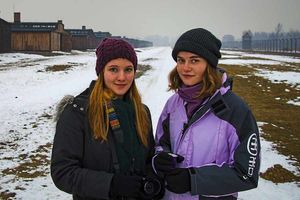
Luke Parker, 17, said: "You can't really compare it to anything else you've ever done before.
"It's taking a figure from a text book and making it real. You understand it on a personal level. The important message they're saying to us is that because the holocaust survivors are diminishing in number, the people who do this need to pass on the message. It's a big responsibility."
The trip, organised by the Holocaust Educational Trust as part of its Lessons from Auschwitz project, is all about what happens when the youngsters return.
They'll each come up with a way to share their experience, whether its through video, art or music.
Some will give presentations to fellow students, while others will go out into the community and spread the message.
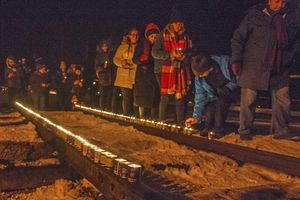
It was an idea at the back of their mind as the group walked through the famous metal gates signposted with "arbeit macht frei" – work will make you free.
We met our guide, Michael, and he walked us through the streets of Auschwitz.
"This is a museum, but it is not a regular museum," he told us. "Auschwitz is a memorial to everybody that died here."
The first rooms deal with the volume of people who arrived at the camp. Pictures of confused but unsuspecting Jews walking into the camp line every wall.
It's impossible to know just how many people were killed at Auschwitz. People were treated as less than cattle and few precise records were made.
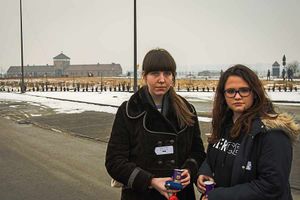
But when the groups walked through rooms filled with stolen eyeglasses, shaven hair ripped from the heads of female prisoners and seemingly endless piles of shoes – including those for children – the impact becomes painfully clear. A few of the young people started to cry. From there we're taken into a gallery of faces – photographs taken of the first prisoners in the camp.
Each new area becomes more and more personal, with life stories, birth dates and death dates. All too often, the death date is unknown.
It's only then that we're walked back onto the street and towards the crematorium.
Afterwards students described it as "cold". Made of brick, it seemed more like a storage space. Somebody had left flowers next to the door.
The strange atmosphere of the crematorium was the perfect preparation for Birkenau, the second part of the camp a few minutes down the road.
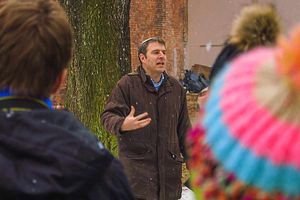
About 75 per cent of the people who arrived at Birkenau were picked to die. They were brought in on cattle carts along black metal tracks.
When they arrived, some were sent to work and others were sent to their deaths.
Those that lived suffered with humiliating and painful torture, as well as rampant disease.
It was along the black tracks that the groups entered the camp.
Mae Lawley and Emily Beynon, from Oldbury Wells school in Bridgnorth, said it had been an emotional experience.
May said: "You don't expect it. You can't prepare. Auschwitz isn't like a normal museum.
"It's so important to come here on trips like this so that we can spread the word to others and see what these people had to go through."
Emily said: "You see the pictures, the hair and where they were killed and it all adds up for you. It's intense. We are here so that we can make sure that history doesn't repeat itself."
Grace Sawyer, 16, from Shrewsbury Sixth Form, said: "It's amazing to put the facts into perspective. This is about seeing not learning.
"As a human race it doesn't feel like we should have been capable of doing this. It's horrible what they did."
Mary Taylor-Lewis, 17, from Shrewsbury Sixth Form, said: "I feel shocked and a bit sick, to see that people could do this to others.
"Seeing the camp and pictures makes it seem a lot more real, a lot more current."
After a long walk around the immense Auschwitz-Birkenau, students took part in a ceremony. Rabbi Shaw spoke to the teenagers about the death of members of his family in the camp, including his grandfather Carmen.
After the ceremony, they walked back up to the tracks and placed a single lit candle. The personal stories, the -7 temperatures and the long day had finally taken their toll, and the group walked in silence back to the coach.
Katie Neath, 17, from Newport Girl's School, said: "
It's a difficult day. I thought I'd be fine, but this is different. There's hope for humanity in a way in that this hopefully won't happen again, but it's hard to see the hope in the camp. I'm not sure it should be as much of a tourist attraction as it is."
Her classmate, Aislinn Deagan, 16, said: "It was a surreal experience."

